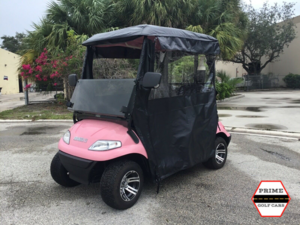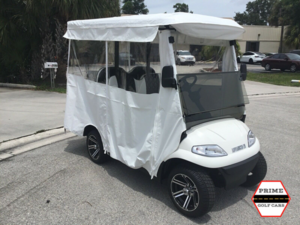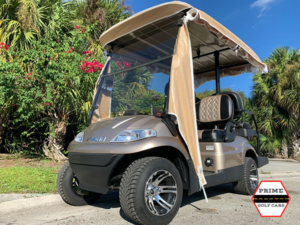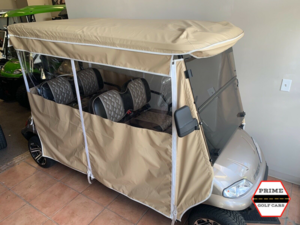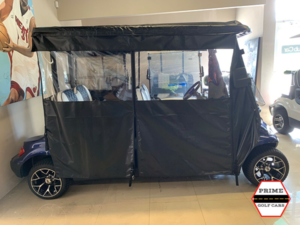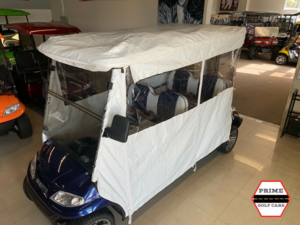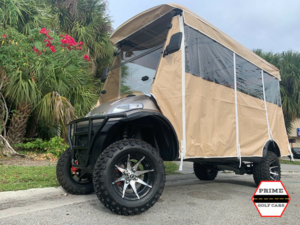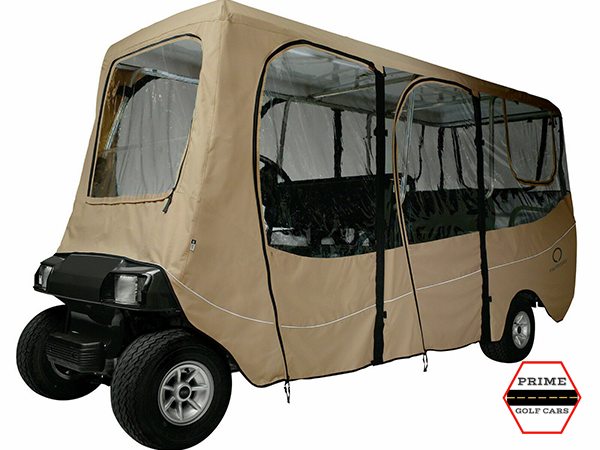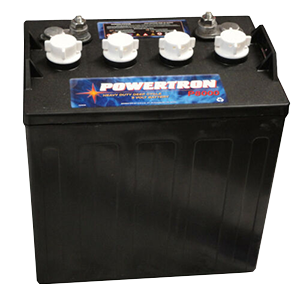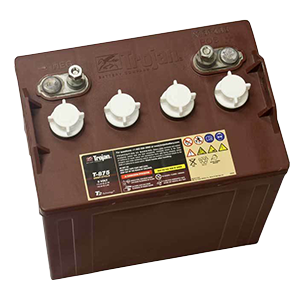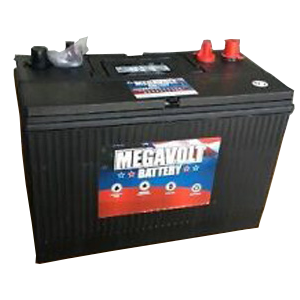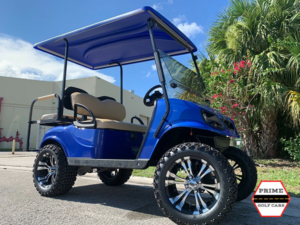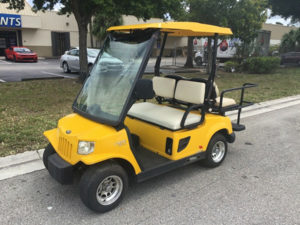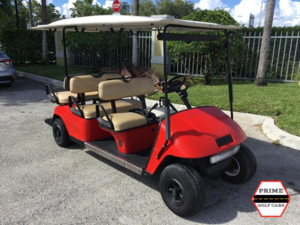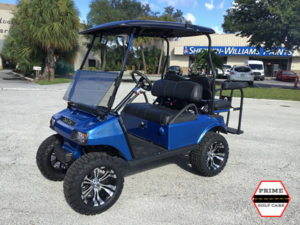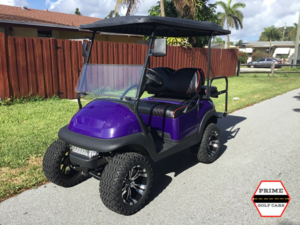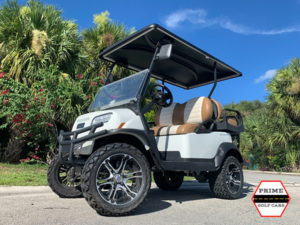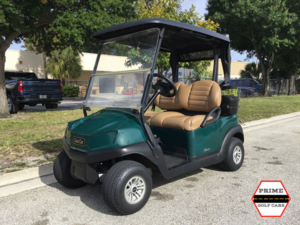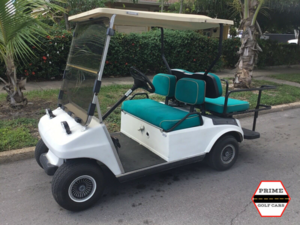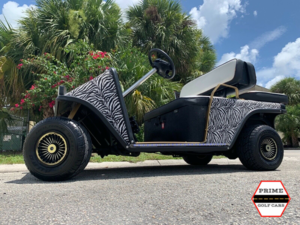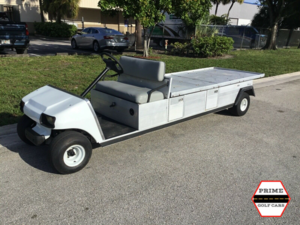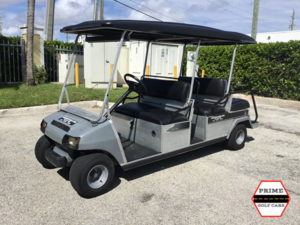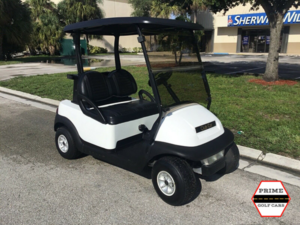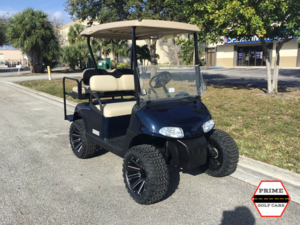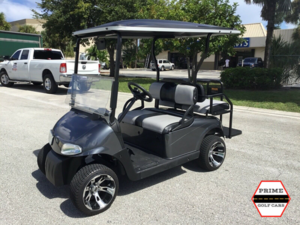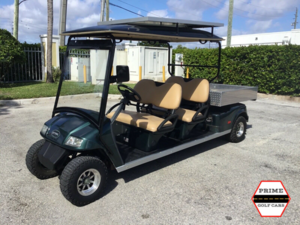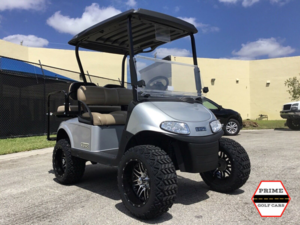A street legal golf cart, referred to as a low speed vehicle (LSV), can reach a maximum speed of 24mph, meaning it is allowed to be driven on roads with a posted speed limit of 35mph or less. There are several roads in Fort Lauderdale – where one of our store locations is – that are 35mph or less, and many that increase to 45mph, or are 35mph but just too crowded. If you’re coming to Fort Lauderdale for vacation and are interested in a street legal cart rental, especially if you’re from out of state, this guide is here to give recommendations for the safest, most effective, and street legal roads to drive a golf cart.
If you’re in any other south Florida city and are interested in renting a golf cart with us, use our rental application for a quote! We deliver and pick up!
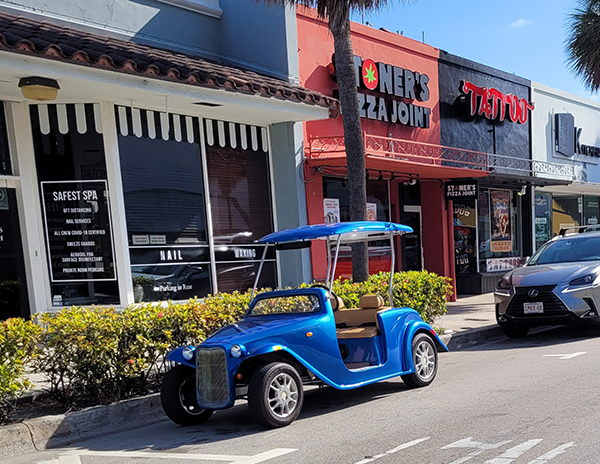 Las Olas Boulevard: Allowed (and highly recommended!)
Las Olas Boulevard: Allowed (and highly recommended!)
Las Olas Boulevard is one of Fort Lauderdale’s most popular areas, filled with all kinds of shops, galleries, restaurants, and more. You’ll see quite a few golf carts here as well, since the speed limit in the main area goes between 25mph and 30mph, depending on where you are, and once across the drawbridge over the Middle River, it goes up to 35mph.
State Road A1A: Allowed
Also called 17th Street, State Road A1A goes all the way up the coast right next to the beach, and most areas are 30mph. You can park a street legal cart rental just like a car, and the parallel parking at the beach is made easier by the golf cart’s smaller size. You can travel quite the distance with a golf cart along the beach road – approximately 20 to 25 miles on a single charge. When your golf cart starts getting down to around 50% charged, you’ll want to take it back to your home or hotel and charge it, since the lower it gets, the longer it takes to fully recharge. We recommend charging it overnight.
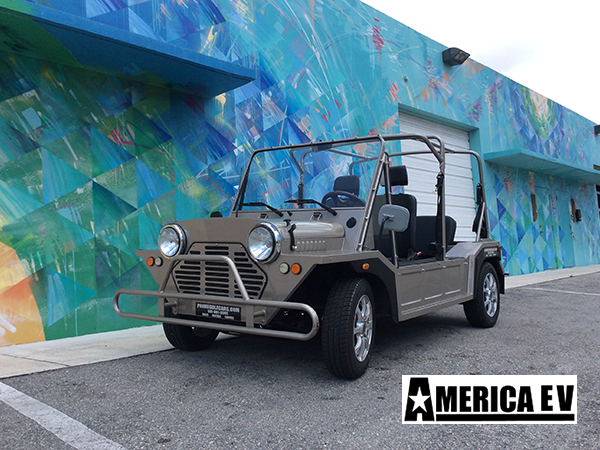 7th Avenue/Avenue of the Arts: Allowed
7th Avenue/Avenue of the Arts: Allowed
Right off 7th Avenue and Broward Boulevard is where our Fort Lauderdale location is – you can find our address and other contact information here. This takes you right through the heart and soul of the city, and past various murals and street art from local artists. You can also find a lot of car repair shops in the more industrial area of 7th Avenue. Check out restaurants such as Miami Grill, and come down 1st street (our street) to eat at Vegan Junkie or Orchestrated Minds Brewing. Enjoy the murals on our store’s building and on nearby businesses as well.
Additional roads for a street legal cart rental:
- Andrews Avenue
- Bayview Drive
- State Road 811/3rd Avenue (Turns into 4th Avenue/Wilton Drive once north of Sunrise Boulevard)
 Broward Boulevard: Not Recommended
Broward Boulevard: Not Recommended
Technically, a golf cart is allowed to be driven on Broward Boulevard, as it is a 35mph road, but it’s also a very crowded road. Lanes merge and split in various areas, and the road also crosses US Highway 1 (US-1), where the speed limit is 45mph. Cars speeding through this area, as well as through different parts of Broward Boulevard, combined with the suddenly merging lanes, can be difficult to navigate for even the locals.
Recommendation: Try taking 6th street, Sistrunk Boulevard, instead. If you’re heading to the beach, take 4th or 6th street east to 3rd Avenue, then go south until you can turn left onto Las Olas Boulevard.
Sunrise Boulevard: Not Recommended
Some parts of Sunrise Boulevard are 35mph, but there are also some areas that increase to 40mph. There’s also an area where it splits into US-1, and this can be confusing or difficult to navigate for those unfamiliar with the area. As a road that goes through industrial areas, Sunrise Boulevard is surrounded by car shops, meaning that there could be cars parked in the road outside of shops. It is also just a big, crowded main road, with a lot of cars, many of them speeding.
Recommendation: If you’re going east of US-1, towards the beach, take Las Olas Boulevard. If you’re going west of US-1, use Sistrunk Boulevard (6th street).
Oakland Park Boulevard: Not Recommended
Oakland Park Boulevard is another crowded road, especially as it gets close to US-1. There are a lot of big stores and plazas along the way, as well as speeding cars. It is a 35mph road, but it’s not recommended due to the many lanes and fast crossroads.
Recommendation: Take 26th street instead – however, remember that there is no beach access from there. If you’re trying to get to the beach, it’s best to take Las Olas Boulevard to State Road A1A, as A1A will take you right along the side of the beach.
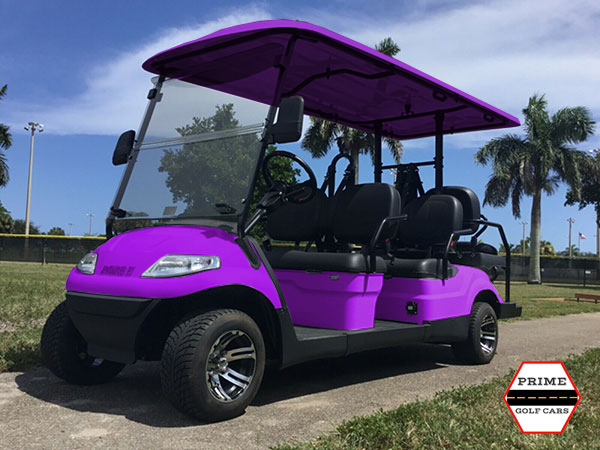 US-1: Not Allowed
US-1: Not Allowed
US Highway 1, or Federal Highway, is 45mph in most areas. Golf carts are not allowed on US-1. Streets close to US-1 or roads that cross over US-1 can be used instead.
Recommendation: State Road 811/3rd Avenue (turns into 4th Avenue later). Make sure to turn onto a different street before Dixie Highway, as this is another road that is not 35mph. Andrews Avenue and State Road A1A also work, even though they aren’t as close to US-1 as 3rd Avenue.
Powerline Road: Not Allowed
As with US-1, most of Powerline Road, or 9th Avenue, is 45mph. As with US-1, nearby streets that are 35mph or less can be used instead, such as residential side streets.
Recommendation: If using main roads instead of residential, use Andrews Avenue for North-South and 26th Street for East-West, or any of the other recommended alternate streets.
Street Legal Cart Rental
If you’re interested in renting a street legal golf cart in Fort Lauderdale, use our Fort Lauderdale golf cart rental application form. If you’re staying in a different city, use our rental form for booking – we offer delivery and pickup for an additional fee as well!


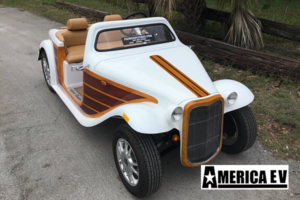

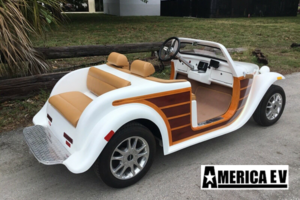

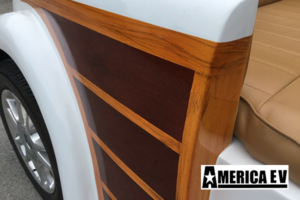


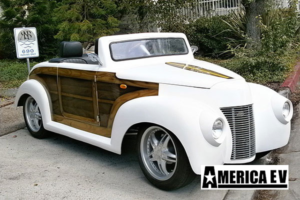

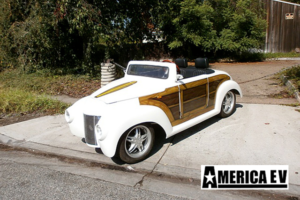
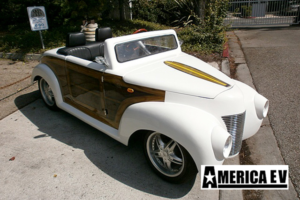
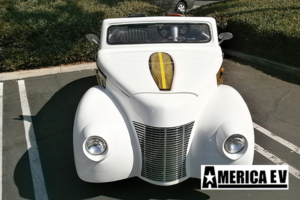


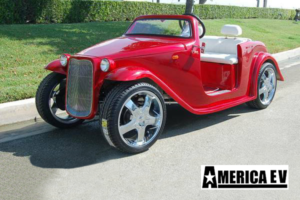
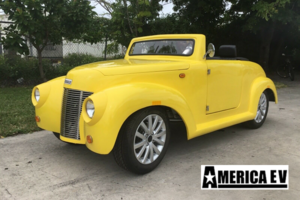
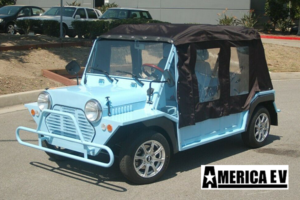

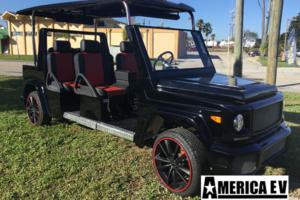
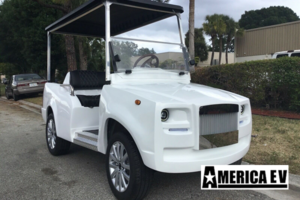
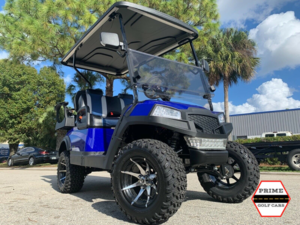
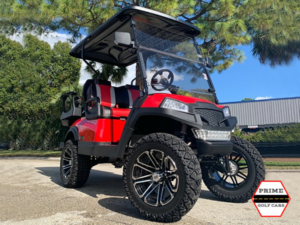
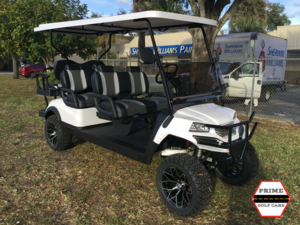
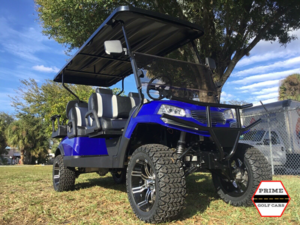
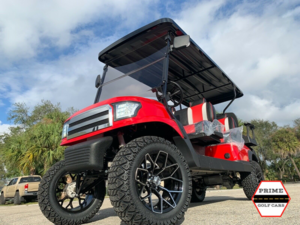
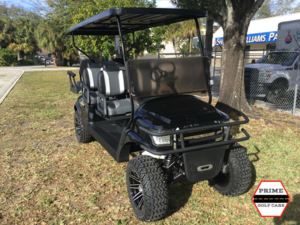
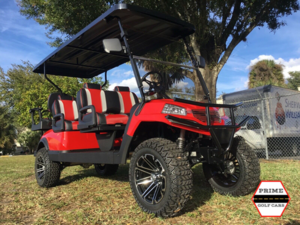
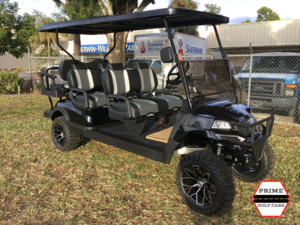
 The Kodiak’s side view mirrors also have LED lights linked to the turn signals.
The Kodiak’s side view mirrors also have LED lights linked to the turn signals.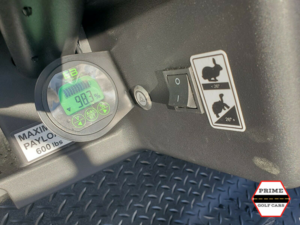 All Kodiak carts have custom three-tone seats (for example, a red cart will likely have black, white, and red seats – most other custom golf cart seats are two-tone instead), a thick tinted folding windshield, hydraulic disc brakes, and a high/low switch next to the state of charge meter. This switch is for climbing and can be flipped between a higher speed for travelling along roads with a less than 26 degree incline, and a slower speed for climbing a higher than 26 degree incline.
All Kodiak carts have custom three-tone seats (for example, a red cart will likely have black, white, and red seats – most other custom golf cart seats are two-tone instead), a thick tinted folding windshield, hydraulic disc brakes, and a high/low switch next to the state of charge meter. This switch is for climbing and can be flipped between a higher speed for travelling along roads with a less than 26 degree incline, and a slower speed for climbing a higher than 26 degree incline.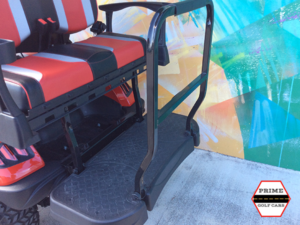
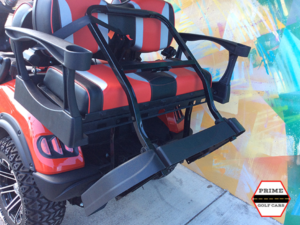

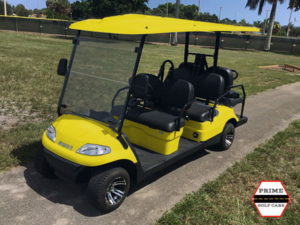 Often times, we use the terms interchangeably, but a golf cart and an LSV are actually two separate vehicles. Low speed vehicles (LSVs) and golf carts can look the same, but the main difference is that LSVs are street legal and have a VIN number. An LSV must have a maximum speed of 24mph in order to be registered as a street legal vehicle, and can be driven on roads with a speed limit of 35mph or less. LSVs also need a variety of safety features in place in order to be street legal, including headlights, tail lights, brake lights, turn signals, a horn, seat belts, a windshield, and side view mirrors.
Often times, we use the terms interchangeably, but a golf cart and an LSV are actually two separate vehicles. Low speed vehicles (LSVs) and golf carts can look the same, but the main difference is that LSVs are street legal and have a VIN number. An LSV must have a maximum speed of 24mph in order to be registered as a street legal vehicle, and can be driven on roads with a speed limit of 35mph or less. LSVs also need a variety of safety features in place in order to be street legal, including headlights, tail lights, brake lights, turn signals, a horn, seat belts, a windshield, and side view mirrors.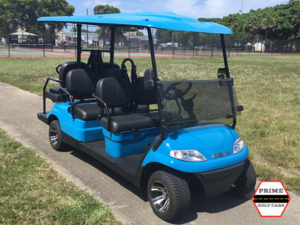
 When buying a golf cart, no matter if it’s new or used, you’ll want to check the condition first. Make sure that a new cart’s batteries are also new and that the range is sufficient, and for used carts, keep the age of the (lead-acid) batteries in mind. It’s okay if the batteries are one or two years old, but if they’re older than that, keep in mind that you’ll need to replace them a lot sooner than you would with new or slightly used batteries. If you want a street legal golf cart, the price will increase, and it’ll be much easier to find a new street legal golf cart instead of a used street legal golf cart; used street legal golf carts are very hard to come by. Check for any damages, even on new carts – damage during shipping is rare, but not impossible. Keep the price in mind too – a brand new street legal cart with multiple accessories will have a much higher price than a 10 year old non street legal golf cart. Make sure everything works, especially when buying a used golf cart – just like a car, keep in mind that you may be paying a lower price now, but may have to spend more for future maintenance, whereas a brand new golf cart may be more expensive now, but will last much longer before needing major service.
When buying a golf cart, no matter if it’s new or used, you’ll want to check the condition first. Make sure that a new cart’s batteries are also new and that the range is sufficient, and for used carts, keep the age of the (lead-acid) batteries in mind. It’s okay if the batteries are one or two years old, but if they’re older than that, keep in mind that you’ll need to replace them a lot sooner than you would with new or slightly used batteries. If you want a street legal golf cart, the price will increase, and it’ll be much easier to find a new street legal golf cart instead of a used street legal golf cart; used street legal golf carts are very hard to come by. Check for any damages, even on new carts – damage during shipping is rare, but not impossible. Keep the price in mind too – a brand new street legal cart with multiple accessories will have a much higher price than a 10 year old non street legal golf cart. Make sure everything works, especially when buying a used golf cart – just like a car, keep in mind that you may be paying a lower price now, but may have to spend more for future maintenance, whereas a brand new golf cart may be more expensive now, but will last much longer before needing major service.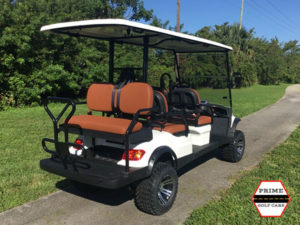
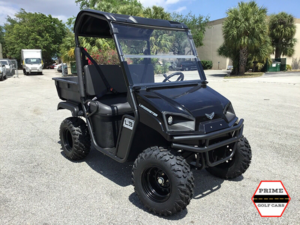
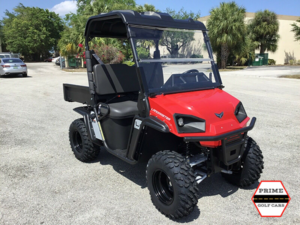
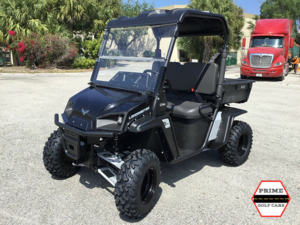
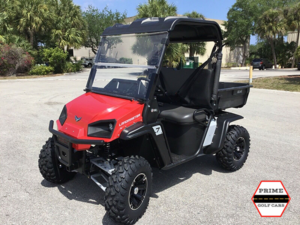
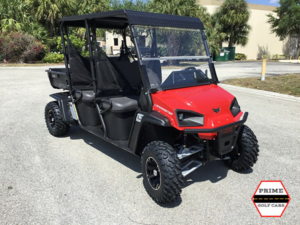
 The American Landmaster is a gas-powered utility terrain vehicle (UTV) able to reach a maximum speed of 24mph, fully American made and built from the ground up in Columbia City, Indiana. Each vehicle is four-wheel drive with four-wheel hydraulic disk brakes, built with more than 30 new features in safety, reliability, performance, and design. Along with its own suspension system – the Landmaster ride optimization suspension system (LROSS) -, the Landmaster also features dual rate shocks. This system helps keep the ride smooth even when the bed in the back is fully loaded – also capable of being dumped. Included as well is a caliper-mounted parking brake system, allowing the vehicle to be parked on an incline and locked in place, and when it’s time to disembark, an indicator light reminds the driver to release the parking brake. These vehicles provide over 8 inches of front and rear suspension travel, and stand with an 11 inch ground clearance.
The American Landmaster is a gas-powered utility terrain vehicle (UTV) able to reach a maximum speed of 24mph, fully American made and built from the ground up in Columbia City, Indiana. Each vehicle is four-wheel drive with four-wheel hydraulic disk brakes, built with more than 30 new features in safety, reliability, performance, and design. Along with its own suspension system – the Landmaster ride optimization suspension system (LROSS) -, the Landmaster also features dual rate shocks. This system helps keep the ride smooth even when the bed in the back is fully loaded – also capable of being dumped. Included as well is a caliper-mounted parking brake system, allowing the vehicle to be parked on an incline and locked in place, and when it’s time to disembark, an indicator light reminds the driver to release the parking brake. These vehicles provide over 8 inches of front and rear suspension travel, and stand with an 11 inch ground clearance.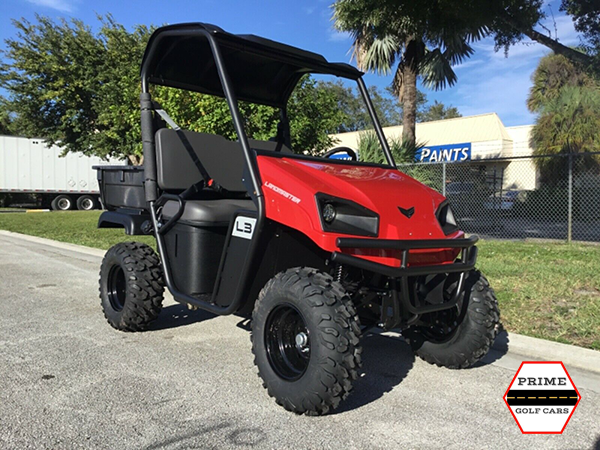
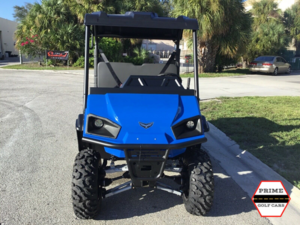 This cart has an all-steel frame – part of what makes it so durable and tough. With this, it’s protected from the inside out from rollover damage, and side skirts and fenders dampen motor and road noise, making the vehicle surprisingly quiet for a gas-powered utility vehicle. The LROSS and super-sport trailing arm also lessen the roughness of uneven terrain, such as railroad tracks, rumble strips, and off-road trails. A winch mount behind the bumper protects the winch from debris, and an in-dash connector for remote access.
This cart has an all-steel frame – part of what makes it so durable and tough. With this, it’s protected from the inside out from rollover damage, and side skirts and fenders dampen motor and road noise, making the vehicle surprisingly quiet for a gas-powered utility vehicle. The LROSS and super-sport trailing arm also lessen the roughness of uneven terrain, such as railroad tracks, rumble strips, and off-road trails. A winch mount behind the bumper protects the winch from debris, and an in-dash connector for remote access.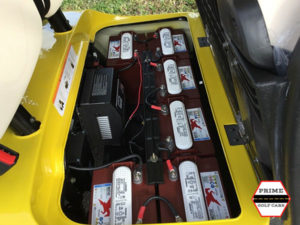

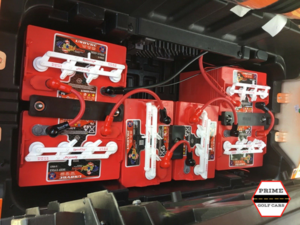
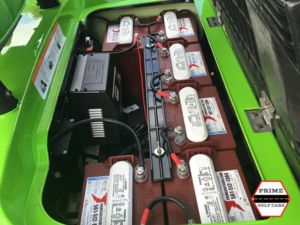

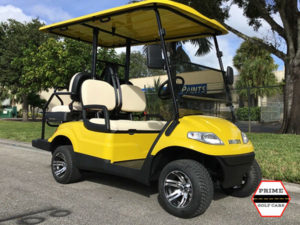 It depends on the golf cart! We sell a lot of street legal low speed vehicles (LSVs), such as our
It depends on the golf cart! We sell a lot of street legal low speed vehicles (LSVs), such as our 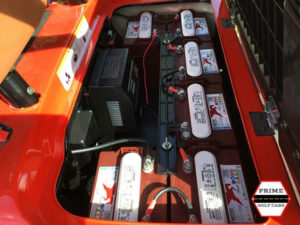 It depends on the condition of the golf cart. Most maintenance is not too complicated, and simple repairs such as battery replacements and tire changes can be done at home. The most important part of the golf cart to maintain and check regularly is the batteries. Standard lead-acid batteries can last around 3-6 years, depending on the type. Eventually, they will need to be replaced, but you can extend the life of the batteries by maintaining them regularly. Always make sure they have the right level of water – generally, they need to be refilled once a month, and you must use distilled water. You’ll also want to check for corrosion and loose terminals, and make sure the condition of the cables stays good. If you need to swap out a battery cable, they are generally inexpensive. Make sure to keep them charged. Other things to look out for include:
It depends on the condition of the golf cart. Most maintenance is not too complicated, and simple repairs such as battery replacements and tire changes can be done at home. The most important part of the golf cart to maintain and check regularly is the batteries. Standard lead-acid batteries can last around 3-6 years, depending on the type. Eventually, they will need to be replaced, but you can extend the life of the batteries by maintaining them regularly. Always make sure they have the right level of water – generally, they need to be refilled once a month, and you must use distilled water. You’ll also want to check for corrosion and loose terminals, and make sure the condition of the cables stays good. If you need to swap out a battery cable, they are generally inexpensive. Make sure to keep them charged. Other things to look out for include: Most of the time, golf carts are electric, but there are still gas golf carts being manufactured – we sell new
Most of the time, golf carts are electric, but there are still gas golf carts being manufactured – we sell new 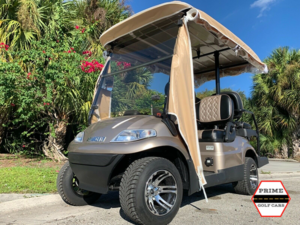
 Yes, provided conditions aren’t too extreme. Golf carts are just like a car in the way that they can be parked outside and don’t necessarily need a garage, but it’s recommended to store them in a garage if temperatures get too hot or cold or heavy rainfall floods the area. If temperatures aren’t too severe or rain is a light to medium shower, you can store your golf cart outside and cover it with one of our
Yes, provided conditions aren’t too extreme. Golf carts are just like a car in the way that they can be parked outside and don’t necessarily need a garage, but it’s recommended to store them in a garage if temperatures get too hot or cold or heavy rainfall floods the area. If temperatures aren’t too severe or rain is a light to medium shower, you can store your golf cart outside and cover it with one of our 